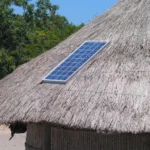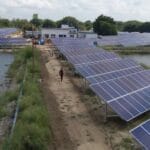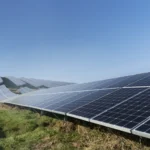Solar Panel Selection Demystified: How to Choose the Right Panels for Solar Installation
Solar Panel Selection Demystified: How to Choose the Right Panels for Solar Installation
With rapid growth in solar PV sector in India, market is getting cluttered with thousands of solar panel companies. While most of these companies are small ventures selling imported solar panels at very competitive prices, there are few large companies such as Tata Power Solar, Su-Kam and Moser Baer offering quality products. With so many products and companies in the market, it’s extremely difficult for a consumer to choose the right panel. A solar panel buying decision should be based on analysis of factors such as which solar panel technology to be used, selection of an ideal panel manufacturer, certifications of the panel, its operating specifications, effect of variance in its performance and efficiency of the panel.
Critical parameters to be considered for solar panel selection:
1. Technology selection is not just about the price
Based on the cell structure, solar panels can be classified in two categories: crystalline silicon and amorphous silicon or thin-film. The crystalline silicon solar panels can be further classified as mono-crystalline and poly crystalline. The crystalline silicon solar panels have the highest efficiency and are costlier then the amorphous variant, which has comparative lower efficiency.
There is no fixed rule for selecting one technology over the other. The selection of solar panel technology generally depends on installation space availability and overall plant cost. Use of crystalline silicon panels can increase panel cost but reduce Balance of System (BOS) cost, which comprises all components of a solar power plant apart from the solar panels, such as installation land, panel mounting structures, cables, power conditioning units etc. The thin-film variant is cheaper and will reduce panel cost but increases the BOS cost.
India’s JNNSM is neutral to the type of technology to be used for the solar power plant. Both crystalline and amorphous silicon technology panels can be used to claim financial benefits under the mission.
2. Importance of sustainability of panel supplier for 25 years to cater the warranty
The market is crowded with small companies which have started less than a year ago who are offering 25 years of performance warranty of their solar panels. With limited financial strength, such small companies, it will be risky to select such panels. It’s always preferred to select the manufacturer which is financially sound and who can bear the fluctuations in the highly dynamic solar panel market. In India, some of the large solar panel suppliers are Tata Power Solar, Moser Baer, Indo-Solar, Su-Kam etc. Certification Requirements: Tap into the Subsidies Available.
In India to claim the financial incentives, JNNSM mentions different certification requirements for off-grid or stand-alone solar systems and grid connected rooftop PV or other small solar power plants. For state level benefits, each state has specified their certification requirements in their solar policies. Although most of their certification requirements are same as that of JNNSM. One is advised to review the state specific or scheme specific certification requirements before selecting the right panel. Typically big brand’s panels are already certified as per MNRE policies and most of the state policies.
3. Operating Specifications suiting to Indian Environment
STC is Standard Test Conditions which are used as global standard for quoting solar panel’s specifications. These conditions are 1,000 Watts per square meter solar irradiance, 25 degrees C cell temperature and air mass equal to 1.5. This test is performed by the manufacturer to know true wattage of the panel under these conditions.
Since actual climatic conditions may be different from STC, I-V curve can give the right specification of the panel under specific climatic conditions. Using the I-V curve, we can estimate the power output of the solar cell in various temperature/solar irradiance conditions. A panel’s power output should be measured based on the installation site’s climatic conditions before selection.
4. Negative Tolerance can lead to a Lower System Performance and Reduced Capacity
Negative tolerance rating of solar panel is its deviation from the labeled specification. For example a 5% negative rating panel with 100W label is warranted for 95W power generation. This parameter is very important in case of large power systems where many panels are connected in series to each other to generate high power and performance of one panel can pull down the performance of the whole system.
For example, a 500W system in which 5 panels with 100W rating and 5% negative tolerance are connected in series will generate minimum 475W. But if one of the panels is having 10% negative tolerance, that panel will generate 90W minimum. Assuming output voltage of each panel to be 20V, in the mismatch system, 4 panels will be generating 4.75A current to give 95W output from each, whereas 1 panel will be generating 4.5A current to give 90W output. Since all the panels are connected in series, the total output voltage will be 100V and the output current will be the least current generated in the series, which is 4.5A. Hence the overall power output of the system will be 450W. Hence one high negative tolerance panel in the system can pull down performance of other high performance panels.
5. Solar Panel Efficiency
Solar panel’s efficiency helps you to understand the size of the solar panel. Higher the efficiency, smaller the panel will be as compared to the same wattage panel with low efficiency. Other advantage of high efficiency solar panels is their marginally better performance under low light conditions. If you have enough installation space, then you can consider low efficiency panels, given that other performance parameters are comparable to the higher efficiency panel.
A solar panel buyer should consider the above mentioned key points to select the right panel suiting the application and project site’s climatic conditions leading to optimized performance of the project.
Suggested Articles

Solar Energy Myths vs. Facts: What You Should Know
Solar power myths often mislead homeowners. Learn the facts about cost, efficiency, and reliability of solar energy.

Fire Hazard in a Solar Setup at Rice Mill, Kaithal – Case Study and Safety Insights
A recent fire incident at a rice mill in Kaithal highlights the critical importance of safety in solar installations. This case study analyzes the root causes, system faults, and preventive actions that can help industries avoid similar hazards in their solar setups.

Demystifying Battery Backup: Everything You Need to Know
Battery backup is essential for uninterrupted power at home and in industries. This guide explains different types of battery backup systems, how they work, their benefits, and tips to choose the right one for reliable energy storage.

SECI Sets Record in Renewable Energy Trading, Surpasses ₹100 Billion
SECI achieves record renewable power trading revenue surpassing ₹100 billion, marking a milestone in India’s clean energy growth and solar market expansion.

Can Solar Systems Support Industrial Motors and Machines? A Complete Guide
Discover how using solar for heavy machines can power industrial equipment reliably and cost-effectively for greener operations.

Choosing the Right Solar Panel: Complete Guide for India
Solar is among the fastest-growing industries in India. This is mainly because solar energy is not only renewable but is also attractive from a financial point of view.

The Rise of Clean Energy: Solar Energy Trends in 2023
The solar energy industry is on the rise, as the demand for clean and renewable energy sources continues to increase. 2023 is shaping up to be a big year for the solar energy sector, as new technologies and innovations are expected to drive growth and expand the reach of solar energy.

Sustainable Solar Panel Disposal: Recycling for a Greener Future
Sustainable solar panel disposal ensures old or damaged panels are recycled responsibly, reducing waste and environmental harm. By adopting eco-friendly recycling and reuse practices, we can recover valuable materials, lower carbon impact, and make solar energy truly sustainable from installation to end-of-life.